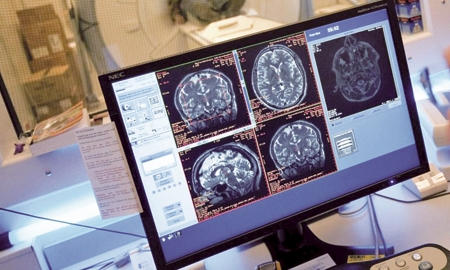Universal health coverage remains a highly controversial issue in the United States, but has been the aspiration of the Mexican government for almost a decade. Now it is close to being achieved.
A decade ago only half of Mexico’s population had health insurance. Today more than 100 million Mexicans have access to public health services.
Establishing a system of social health protection, known as Seguro Popular, to provide a safety net to citizens with no access to social security has not been without its challenges and its critics, but is widely seen as a significant step towards preventing illness and fighting poverty, as well as being beneficial for the economy.
Margaret Chan, Director General of the World Health Organization, has praised President Calderon for the expansion of access to healthcare under his administration. She told the International Forum on Universal Health Coverage in April that Mexico had given the world “an outstanding example of what can be achieved through high-level political commitment.”
Mexico’s health protection system is fragmented, and until recently excluded a large swathe of the population by being based on employment status. Salaried private sector employees and their families – approximately 50% of the population – are covered by the social security system. They pay a proportion of their wages into an insurance scheme through the Mexican Social Security Institute (IMSS), which runs its own primary care units and state hospitals.
Government employees have their own health insurance program, and their own clinics and hospitals, contributing through the Institute of Security and Social Services for State Workers (ISSSTE), and there are also separate schemes for members of the armed forces and employees of the state-owned petroleum company, Pemex.
Until recently, however, there was no health insurance cover for the country’s poorest citizens – those working in the informal economy, smallholder farmers, the unemployed, etc. More than 50 million Mexicans were at risk of being faced with medical bills they were unable to pay, or of simply going without the treatment they needed. Catastrophic illness was bankrupting 3 to 4 million people each year.
“When you include Mexicans who have social security, you can see that Mexico is reaching national health coverage.” Dr. Salomon Chertorivsky, Minister of Health |
President Felipe Calderon’s predecessor, Vincente Fox, decided to reform the system, and launched the ambitious Seguro Popular program, one of the world’s largest health policy reforms of recent decades.
Approved by the Mexican Congress in 2003 and phased in over a period of years, the government-financed program offers coverage to all Mexicans not protected by any other public insurance scheme. A variety of common diseases are covered, such as cancer, asthma, anemia, pneumonia, and diabetes, with free access to regular and preventive medical care, medicines, and health facilities.
The federal government provides most of the funding, although state governments also contribute, and are responsible for the administration of the program.
Enrolment in the scheme is voluntary. Family contributions are based on income, with the poorest paying nothing at all.
“What we implemented was a mechanism that would effectively finance the health of all Mexicans,” says Dr. Salomon Chertorivsky, Mexico’s Minister of Health. “Public expenditure on healthcare has grown by 82% in real terms. As of today, 52 million Mexicans are covered by popular insurance. When you include Mexicans who have social security, you can see that Mexico is reaching national health coverage.” He says the program covers 100% of the needs of primary care, 95% of the reasons that any Mexican could be admitted to a hospital, and a substantial portion of the costs of highly specialized care.
“Mexico now covers universally all cancers in children, non-Hodgkin lymphoma, HIV with all antiretrovirals, myocardial infarction, cataracts, among other ailments.”
Although, at 6.9% of the GDP, health expenditure remains low when compared with the Latin American average, public funding has substantially increased.
Since coming to office in 2006, President Calderon has made healthcare a priority, increasing investment in health infrastructure and equipment. His administration has overseen construction of more than 1,000 new hospitals or medical units, from modest clinics and medical centers to state-of-the-art hospitals equipped with the latest technology and comparable with the best in the world. An additional 2,000 hospitals or clinics have been upgraded.
Dr. Chertorivsky acknowledges that further reforms are needed. Mexico’s population is relatively young but by 2040, one out of every four Mexicans will be over 60, and Mexico will face the same challenge that the United States faces today with the ageing baby boomer generation.
“Mexico has a population that is still young, but ageing,” says the Minister. “Diseases are changing. We have to move from the curative to preventive.”
He also sees huge potential for Mexico as a medical tourism destination. Increasing numbers of American citizens travel south of the border for affordable medical treatment like heart surgery, dental work, cosmetic surgery, orthopedic treatments, and weight loss. New clinics and specialized hospitals have been springing up in Mexico City, Guadalajara, and Monterrey.

0 COMMENTS